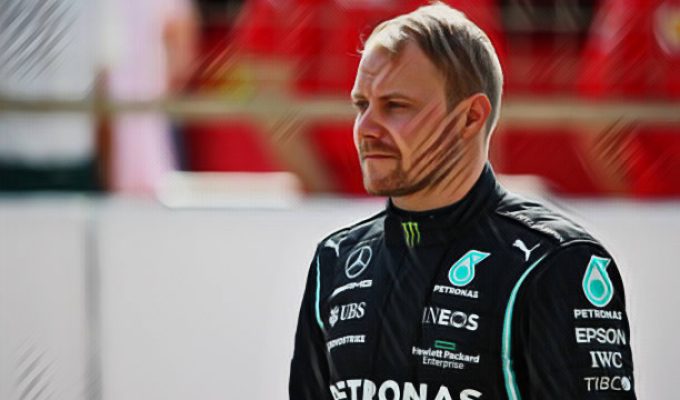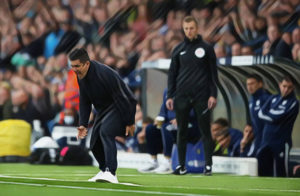Mercedes are yet to decide on who will partner Lewis Hamilton for the 2022 F1 season.
The contest for the second seat is seemingly one between current driver Valterri Bottas and Williams and Mercedes junior driver George Russell.
With Bottas having his worst year statistically at Mercedes to date, and Russell one of the drivers of the season with Williams, rumours that the Brit will replace the Finn for 2022 are gathering pace.
Yet such a decision would be rash.
For one, Bottas has been Hamilton’s teammate since joining the Silver Arrows in 2017, meaning the two have built a strong relationship together.
Hamilton has regularly stated this publicly. For example, following his victory at last month’s British Grand Prix, a race in which Bottas followed team orders and allowed Hamilton to pass him, Hamilton emphasised that he “couldn’t [have won] without the teamwork from Valtteri”.
Amidst the rumours of Russell to Mercedes, Hamilton has even stated that “Valtteri is the best teammate I ever had. And when I say that, I mean not only the performance but also the morale in the team and how we work together.”
It would therefore be odd to break up a partnership that is both harmonious and effective, especially after the difficulty Mercedes had in managing the relationship between Hamilton and Nico Rosberg, Bottas’ predecessor.
Bottas has also shown his willingness to follow team orders, the second reason why he is the perfect Mercedes teammate to Hamilton.
There are numerous races that highlight this.
Mentioned above was this year’s British Grand Prix. At this year’s Spanish Grand Prix, Bottas also jumped out of the way to allow Hamilton through. In Germany 2018, despite being on much fresher tyres, Bottas accepted orders to hold his position behind Hamilton. Most dramatically, at the 2018 Russian Grand Prix, Bottas handed over a victory by letting Hamilton past.
With Red Bull’s Max Verstappen providing Hamilton’s stiffest competition in years, this season has also seen Bottas provide a tow for Hamilton at every opportunity in qualifying.
In Azerbaijan, for example, a track where a tow down the main straight is worth around 0.5 seconds, Bottas went ahead of Hamilton for both of their runs in the Q3. As a result, Hamilton qualified second whereas Bottas qualified tenth, 1.2 seconds down on his teammate.
Finally, Bottas is the perfect teammate because he is quick, but not too quick.
Across a whole season, he has shown he does not have the pace to compete with Hamilton. This means there is a clear hierarchy between the drivers, with Bottas playing second fiddle.
Yet the Finn is quick enough to beat drivers from other teams competing with Mercedes at the front. Since joining in 2017, Bottas has won nine races, finished second 27 times, and third 17 times. This has translated into two second place finishes in the driver’s championship, one third place finish, and one fifth place finish.
What this means for Mercedes and Hamilton is that Bottas takes points from other drivers, helping both win their respective titles. Indeed, since his arrival in 2017, Mercedes have won every constructor’s championship, and Hamilton every driver’s championship.
Bottas is even quick enough to ensure that, when Hamilton is not performing, he will represent Mercedes at the front of the race and compete for victory. For example, in Monaco this year, Bottas was in running in second before being forced to retire, with Hamilton off the pace and down in seventh. At last year’s Austrian Grand Prix, Bottas won while Hamilton finished in fourth because of a collision with Red Bull’s Alex Albon.
At the 2019 Australian Grand Prix, Hamilton finished 20 seconds behind Bottas in second. It was a similar story at the 2019 Japanese Grand Prix, where Hamilton finished third, 13 seconds behind his teammate and winner.
Such performances are helped by Bottas’ qualifying pace, since the Finn has often been within a tenth or two of Hamilton during his Mercedes career, meaning he usually lines up one spot behind his teammate and ahead of most, if not all, other drivers on the grid.
Were Mercedes to drop Bottas in favour of Russell, arguably a faster driver, they would therefore be disrupting an effective and title-winning partnership.
While Bottas has struggled so far this season, Russell could potentially be much closer to the pace of Hamilton, creating tension within the team. Much like 2016 when Hamilton and the aforementioned Rosberg were teammates, this could lead to clashes on track, something Mercedes cannot afford again because of how close Red Bull now are to them.
Yet, a question can be asked as to whether Bottas should leave the Silver Arrows for his own sake.
The answer to this depends on what the 31-year-old wants. If he wants to drive a race-winning car, he should stay. While the 2022 regulation changes may shake the grid up, it is still a good bet that the Mercedes will be one of the fastest cars at the start of next season.
If Bottas wants to be a driver on equal terms with his teammate, however, then he should leave.
It has become clear this season, more than any other, that the entire Mercedes set-up is geared towards Hamilton winning. Bottas has become both increasingly ignored and increasingly frustrated.
Following him securing pole position at the Portuguese Grand Prix, for instance, the TV cameras cut to the Mercedes garage where none of the pit crew appeared to be celebrating. Such images were in stark contrast to every single pole position secured by Hamilton this season, let alone the images following his race victories.
At the Monaco Grand Prix, Mercedes Team Principal Toto Wolff was quick to blame Bottas for the Finn’s retirement, emphasising that he stopped fractions before his pit marks, causing an error from the front-right mechanics. Yet the Austrian said nothing about Hamilton’s below-par performance as the Brit qualified and finished in seventh, well off the pace of his teammate.
Wolff later backtracked on his comments, but the fact he made the critique in the first place was slightly absurd.
Finally, at the French Grand Prix, Bottas was vocal over team radio, stressing that his hard tyres would not last and that he would need to pit again. He was ignored, leading him to engage in an expletive message towards the end of the race questioning why nobody listened to him.
For Bottas’ own sake and his own happiness, then, it is perhaps the right time to move on.
He should have teams after him: as explained above, he is a quick driver. His performances at Williams also attest to this: in four years with the British team, he secured nine podium finishes, beating teammates Pastor Maldonado and later Felipe Massa every season. Indeed, such performances encouraged Mercedes to sign him in the first place.
A reset and an environment in which he is at least an equal driver might therefore make the Finn even quicker.






